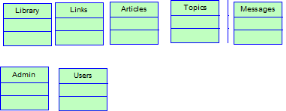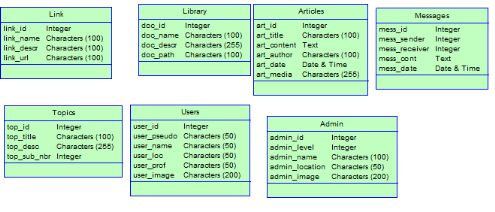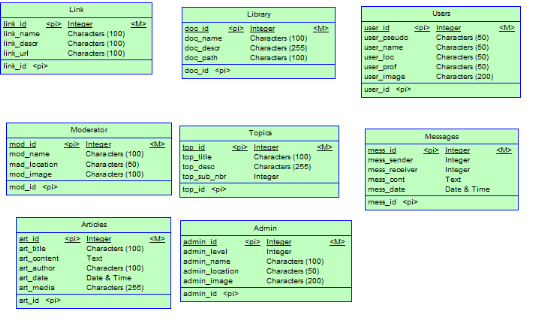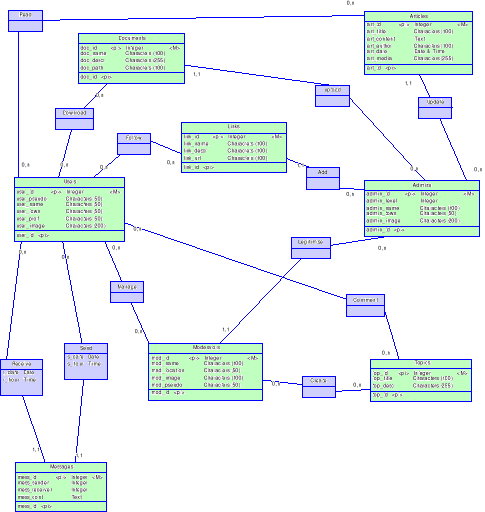5.3. The Data Conceptual Model (DCM)
The DCM is based on entity concepts and association and on
the concepts of relationships. Graphing, simple and accessible, allowing a
non-IT to participate in its development. The basic elements of a conceptual
data model are:
· Properties;
· Entities;
· Relations.
5.3.1. Entities
The entity is defined as a management object considered of
interest to represent the activity model (eg user entity) and each entity
carries one or more simple properties, including one called atomic, unique and
discriminant is designated as an identifier.
The establishment of this portal requires the following
entities:


Figure 1: Entities of the
project
5.3.2. Properties
The properties are the basic information of the information
system. They are essential and basic information.
 
Figure 2: Entities
attributes
5.3.3. Occurrence
An instance is the value taken by an attribute. Thus, each
entity has a case.
5.3.4. Identifier
One of these properties has a specific role, it is also known
as the key identifier. The identifier is used to find a safe and unique way all
the properties involved in the entity. We must find or invent a property when
its value is known allows the knowledge of all the values attached to it
formally.

Figure 3: Entity
identifiers
5.3.5. Associations and
Cardinalities
The association is a semantic link between one or more
entities: the association can be reflexive, preferably binary, and ternary
sometimes or even higher dimension. It may also be a carrier of one or more
properties.
The association is enriched by the notion of cardinality, it
indicates the minimum and maximum number of times any occurrence of an entity
can participate in an association, and we can have:
· Minimum Cardinality
- 0 if an occurrence of the entity may exist while not
interfering in any occurrence of the association
- 1 if an occurrence of the entity can exist only if it occurs
in at least one occurrence of the association
- N: Rare cases to avoid
· Maximum cardinality
- 1 if an occurrence of the entity cannot be involved in more
than one occurrence of the association
- N whether an instance of the entity cannot be involved in
more than one occurrence of the association

Figure 4: Associations and
cardinalities
5.3.6. Normalisation rules
This is about the rules to be observed the relationship
entity association to be valid.
·
Normalisation of names
The name of an entity, his attributes and the name of the
association between the entities must be unique. Two entities can't have the
same attribute name.
·
Normalisation of identifier
A good identifier should avoid too much attributes, and should
have the lesser number of characters as possible.
·
Normalisation of attributes
It is recommended to avoid entities with too many attributes
by replacing those attributes with associations.
·
Normalisation of attributes of associations
The associations attributes must directly depend of the
identifiers of the table that the association link.
| 


